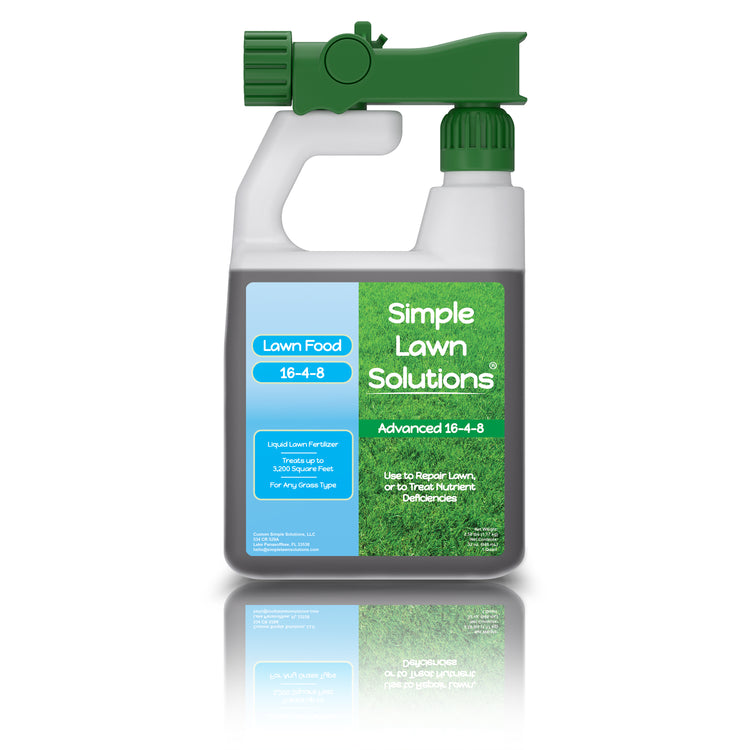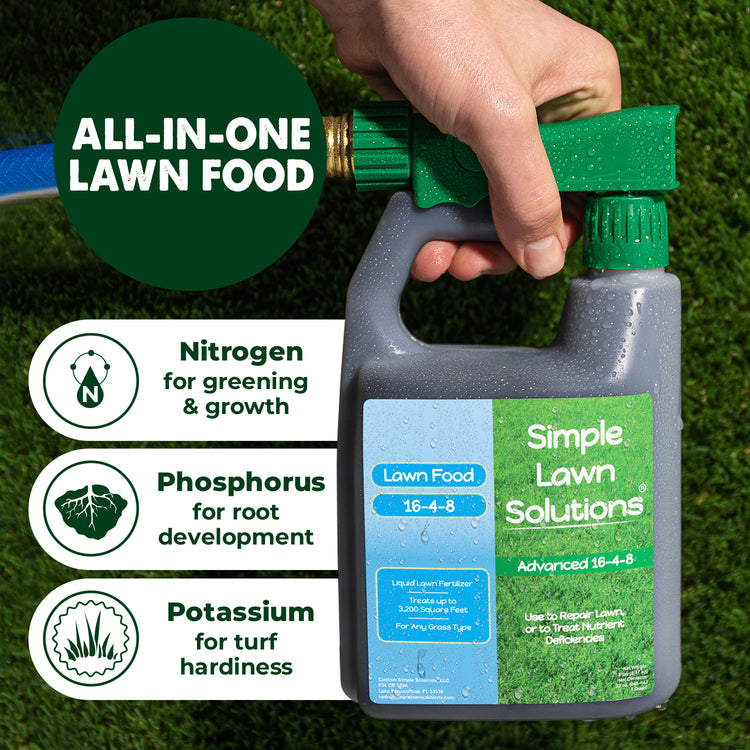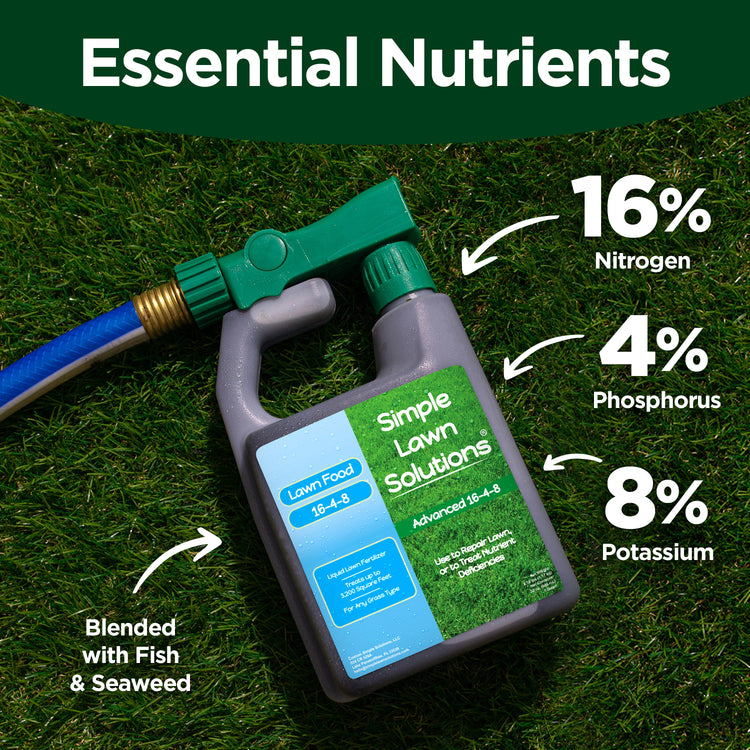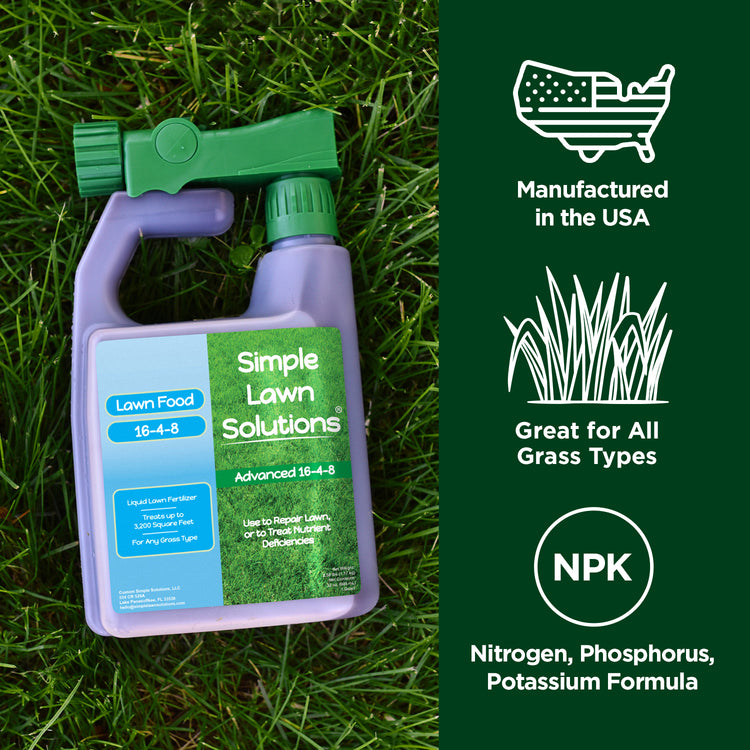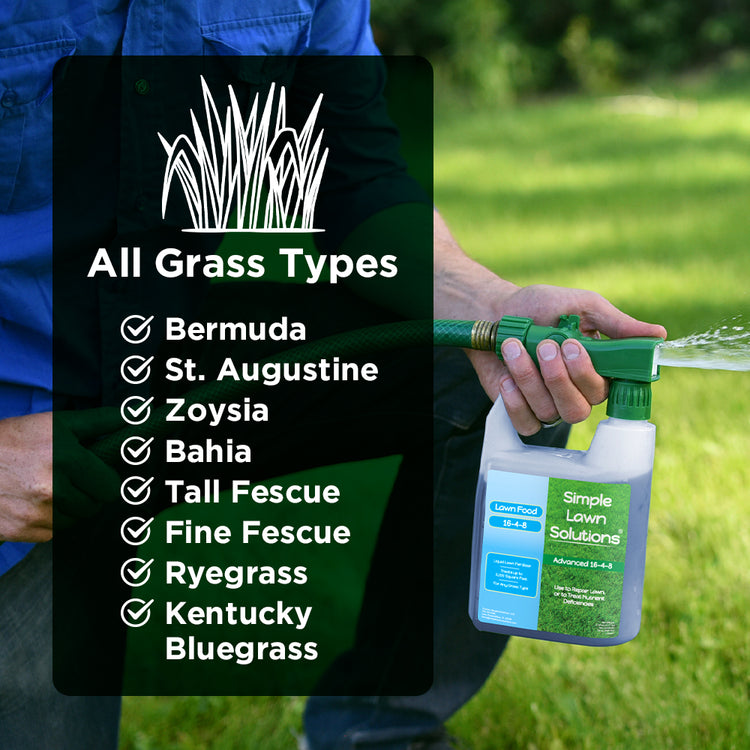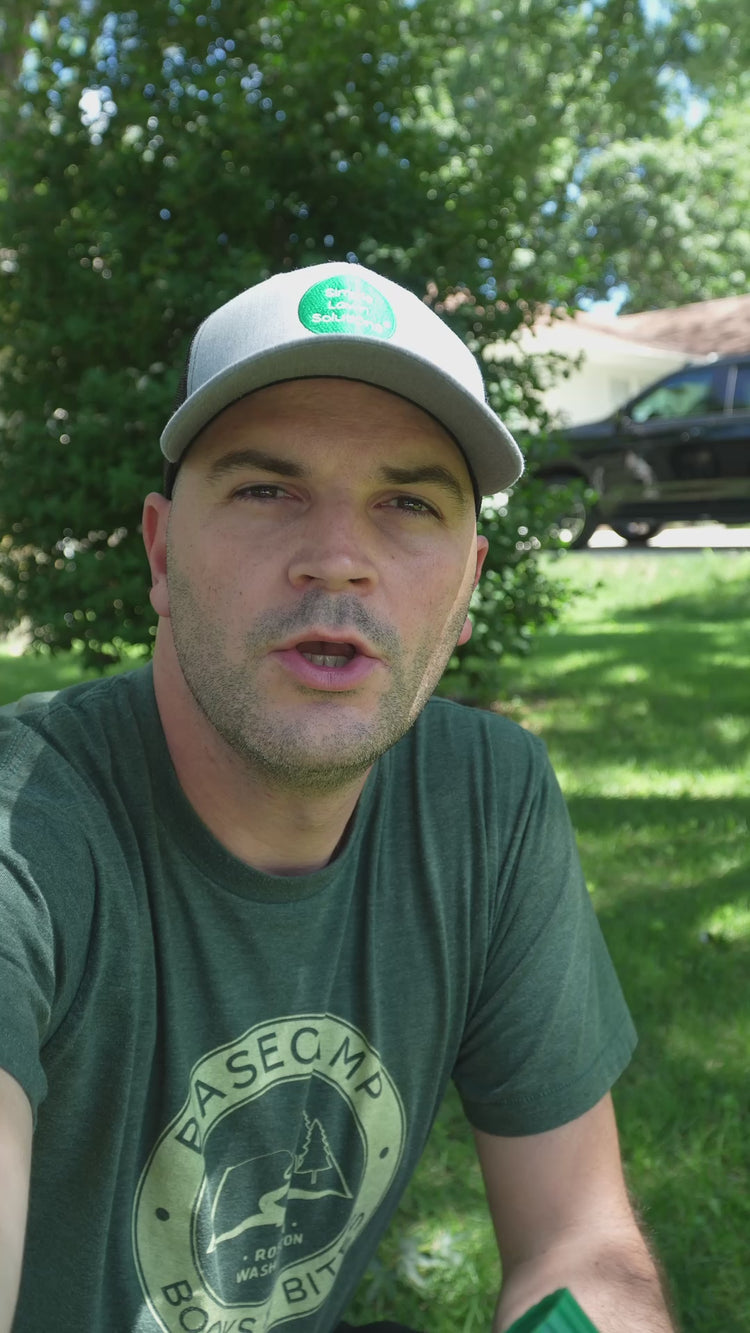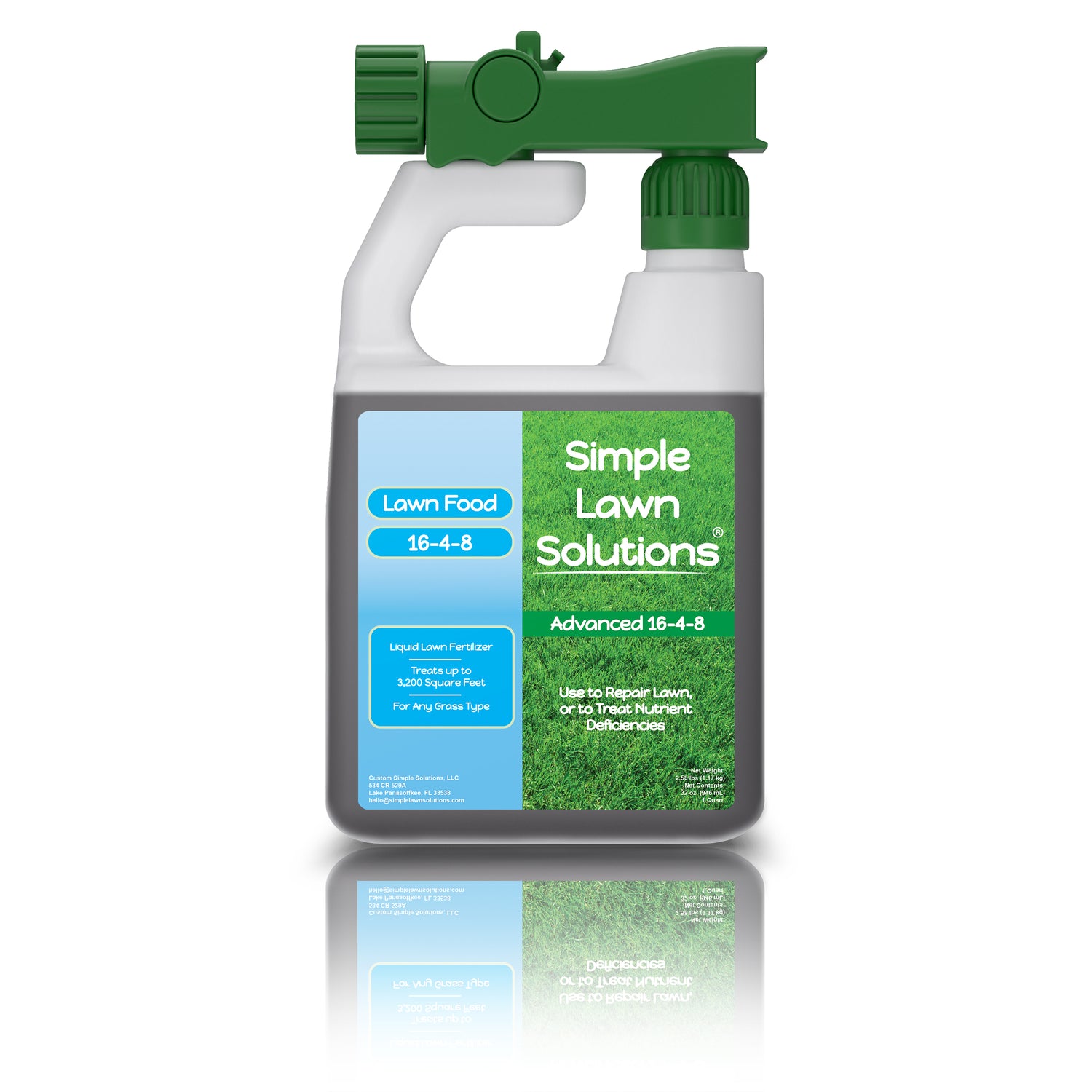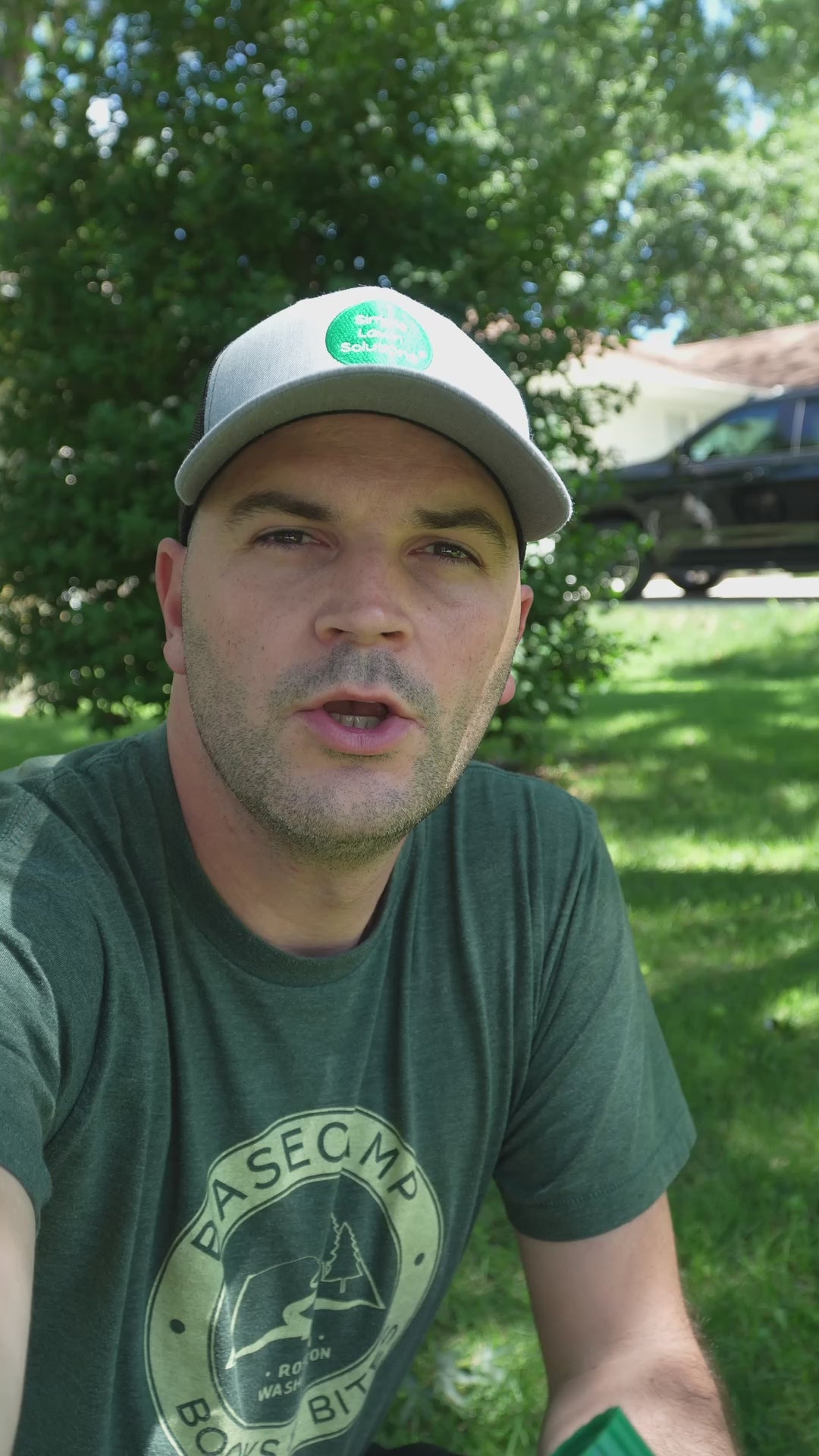Grow a lush, green lawn!
16-4-8 Lawn Food contains the three essential macronutrients, Nitrogen, Phosphorus, and Potassium fertilizer. This liquid lawn fertilizer contains Nitrogen, Phosphorus, and Potassium. This all-in-one NPK fertilizer is designed to encourage turf greening and grass growth while providing nutrients for strong roots. This Nitrogen, Phosphorus, and Potash grass fertilizer is infused with Seaweed (Kelp) and Fish for optimized nutrient efficiency.
16-4-8 is a great option for spring and fall fertilizer if you have a cool-season lawn. For warm-season grasses, apply as a spring or summer fertilizer, with a micro nutrient fertilizer to maintain color.
Nitrogen 16% is the mineral element used in the greatest quantity by turf. Nitrogen is a component of many of the biochemical constituents of plants, including chlorophyll, amino acids, proteins, and enzymes. The addition of Nitrogen fertilizer can provide ideal conditions for a dense, attractive lawn.
Phosphorus 4% The proper level of phosphorus in your grass is essential for root and early plant development. Its primary role is in the storage and transfer of energy. Without sufficient P, normal growth and development cannot occur. Phosphorus fertilizer effects on turf are usually more subtle and, while not as readily visible, are still very important.
Potassium 8% is involved in carbohydrate formation, photosynthesis, enzyme activation, and the formation of proteins. Potassium fertilizer plays a role in photosynthesis, and carbohydrate production is reduced when K is deficient. A plant deficient in Potassium can be more susceptible to stress from drought and temperature.
Seaweed & Fish Emulsion Fertilizer: Kelp (Ascophyllum nodosum) and fish, organic matter for a more effective Lawn Food and optimum nutrient uptake.
Who Should Use This Lawn Fertilizer? 16-4-8 Lawn Food is best to be used...
- To support ideal conditions for lush grass growth and strong roots
- If you want to get greener grass
- If your lawn is deficient in Nitrogen or Potassium
For best results, water the lawn for 20 minutes within 24 hours of application. Water is essential for maintaining your lawn, and your lawn should receive 1-2 inches of water per week. Fertilizer will not treat a lawn that is suffering from disease, pests, weed infestations, or drought, and these conditions should be treated separately.
Not recommended to apply this product during drought, or drought-like conditions.
This fertilizer contains Phosphorus and may not be used for lawn maintenance on turf in Maryland, Michigan, New Jersey, New York, and Virginia except when 1) Providing nutrients to specific soils and target vegetation as determined to be necessary in accordance with a soil test that was conducted by a laboratory* performed no more than 3 years before the application. 2) Establishing vegetation for the first time, such as after land disturbance, provided the application is conducted in accordance with the recommended application rates established by the state. 3) Re-establishing or repairing the turf area. *In Maryland, the soil testing laboratory must be identified under Section 8-803.7 of the Agriculture Article, Annotated Code of Maryland.
